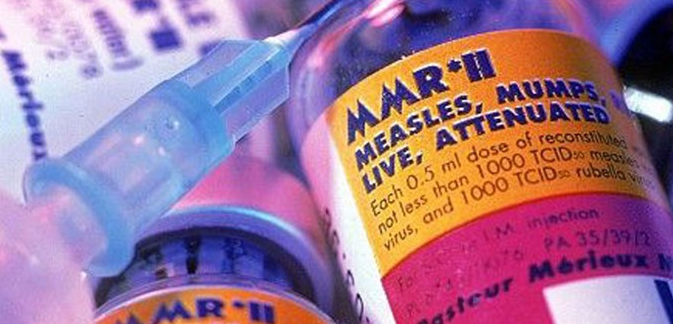
A Shelby County Health Department representative speaks at the West Tennessee Opioid Summit
Through the occasional tear, a longtime Memphis journalist told the story of his 27-year-old daughter’s heroin overdose to a crowded room on Tuesday.
At the West Tennessee Opioid Summit, Ron Maxey of The Daily Memphian said it has been almost five years since he found his daughter’s lifeless body following a fatal overdose.
He said he tells her story so that people will understand the effect that opioid abuse can have on families.
Hundreds, including Shelby County Health Department (SCHD) officials, Memphis Fire and Police personnel, representatives of insurance carriers and pharmaceutical companies, law enforcement officials, and physicians gathered Tuesday to discuss the opioid epidemic in West Tennessee and brainstorm possible solutions.
The latest available data from the Tennessee Department of Health (TDH) shows that of the 1,776 drug overdose deaths that occurred in the state in 2017, 1,268 of them were opioid related.
Nationwide, 30 Americans die every day from opioid overdose, according to the Centers for Disease Control.
Memphis Police Department (MPD) director Michael Rallings said since he was appointed in 2016, he has gained a different perspective on the opioid crisis, recognizing its implications. Rallings said there are a lot of conversations about reducing violent crime, but not enough about the opioid epidemic.
[pullquote-3]
Across the country, there are about 17,000 homicides each year, but there are 70,000 drug-related deaths, Rallings said. Seventy percent of all crime here is related to drugs, Rallings added.
“We need to focus on some of the real problems,” Rallings said. “And this is one of those real problems. You don’t need the police director to come here and tell you we have a problem. We all know that we have a problem. The question becomes what are we going to do about it.”
Each quarter, Rallings said he meets with chiefs from police departments around the country to discuss major issues in their respective communities, and that the opioid epidemic is “at the top of the list.”
“So I’m worried about the future,” he said. “I’m worried about the future because we are hooked on drugs. We have a number of epidemics that we should be alarmed about. Not only do we have an opioid epidemic, but we have a public health emergency with mental illness.”
Rallings said “we cannot turn this epidemic into a law enforcement problem.”
To help reduce the number of overdoses here, Rallings said police officers are being trained to administer naloxone, a drug that can reverse the effects of an opioid overdose. Of the 2,100 active MPD officers, Rallings said 1,379 officers have received training and carry the drug while on duty.
Since 2017, there have been 116 doses of naloxone administered here, resulting in 106 survivals.
Another way that the department is working to address the issue is with the Street Team for Opioid Prevention (STOP). STOP, a product of the Shelby County Opioid Epidemic Response Plan which was formed last year, is made up of law enforcement and other community partners.
STOP will focus on engaging residents through education, referrals to community resources, and harm reduction.
Later this month the team is slated to hold a community event at the former Applebees on Sycamore View — a hotbed for opioid use and distribution, Rallings said. The team, along with volunteers, will be there to provide assistance and resources to those using opioids.
Rallings said the group’s focus will be on prevention, education, and treatment: “We’re not there to lock anybody up.”
We’re going to ground zero. We’re going to go in there and see if we can make a difference. That’s one of our highest call areas, so we feel like that’s a great place to be.”
[pullquote-1]
Memphis is situated in a location where people can easily pass narcotics through, Assistant United States Attorney, Michelle Kimbril-Parks said.
The Department of Justice’s primary focus here is addressing the supply and demand, she said.
Under the Heroin Initiative, a collaborative effort of local enforcement agencies, Kimbril-Parks said every individual in the possession of an opioid who gets stopped or arrested is reviewed by law enforcement.
The primary question the team looks to answer is where did the drugs come from.
“We’re not just interested in the street suppliers,” Kimbril-Parks said. “We’re utilizing every tool in the toolbox to determine where this individual got this dope. We want to identify every individual in the chain and hold them accountable.”
Jerry Jones, an anesthesiologist at Regional One Health, talked about the risk factors that could lead to an opioid addiction, such as undergoing surgery.
Jones said there are other ways to combat acute and chronic pain, such as nerve blockers. Even serious injuries don’t always require narcotics, he said.
But, Jones said it would take a culture change for medical professionals to be willing to try alternative treatments.
[pullquote-2]
Phillip Northcross, a doctor of internal medicine at LeBonheur Healthcare, agreed that there are other viable options to manage pain. Northcross said acupuncture, physical therapy, and lifestyle changes are a few of them. He also said that recent studies have shown that Tylenol and Ibuprofen can be very effective for managing pain.
However, he said it is hard to get patients who are used to being prescribed narcotics to try other options.
“They just don’t buy it,” Northcross said. “As physicians it’s our responsibility to change that thinking to get people to embrace other modes of pain treatment.”
After the presenters spoke, attendees of the conference broke into groups to brainstorm solutions to the opioid crisis here, focusing on the four pillars of the SCHD’s plan to address the epidemic: law enforcement and first responders, data usage and integration, prevention and education, and treatment and recovery.
Some of the solutions suggested include working to erase the stigma associated with opioid addiction, providing a holistic system of recovery, legalizing marijuana, and pushing elected officials and lawmakers to address the issue further through legislation, funding, and initiatives.
Officials with the SCHD said the real time solution produced by the groups will guide the department’s efforts to combat the crisis.
 USGS
USGS 






 Louis Goggans
Louis Goggans